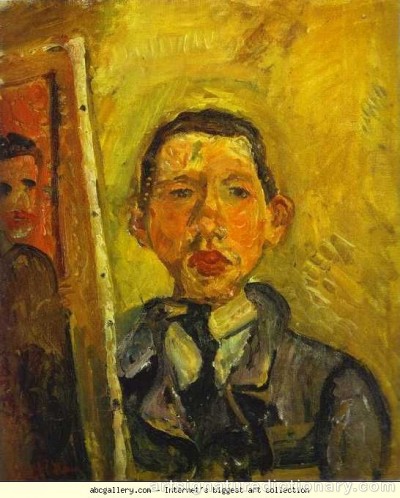
Chaim SOUTINE
1893–1943, Belarus/France/Russia
Biography
Discover the life and artistic journey of Chaim SOUTINE (born 1893, Belarus, died 1943, France), including key biographical details that provide essential context for signature authentication and artwork verification. Understanding an artist's background, artistic periods, and career timeline is crucial for distinguishing authentic signatures from forgeries.
Chaim Soutine was born in 1893 in Smilovichi, a small Jewish settlement not far from Minsk, then the territory of the Russian Empire, now Byelorussia. He was the 10th child in an extremely poor family of a mender with 11 children. Chaim's early interest in drawing was strongly opposed by his own family. His elder brothers beat him - and more than once - as a true Jew was forbidden to draw. When Chaim was 15, a sad accident with a neighbor took place - Chaim offered to draw the old man’s portrait, and the sons of the man beat him cruelly. Chaim's usually humble mother decided to act this time, went to court and won it. The compensation of 25 rubles allowed Chaim to go to Minsk and enter an art college. A year later Chaim moved to Vilnus (now the capital of Lithuania) to apply to the School of Fine Arts for a 3-year course.
During his years in the School he managed to save money for a fourth-class train ticket to Paris. He came there in July of 1913 after finishing his studies in Vilnus. The painter Pincus Krémègne, who had been at the Vilnus School with him, brought Soutine to the La Ruche (The Beehive) the famous rotunda built for the Paris Exposition and later used for artists' studios. Chagall, Leger, Lipchitz, Kisling and Modigliani lived and worked at the La Ruche at various times. Modigliani was to become Soutine's close friend and supporter; he introduced Soutine to his first patron and art dealer - Sborowski. In spite of the contacts Soutine made with certain avant-garde artists and poets, he enrolled for a brief period in the academic classes conducted by Cormon, who, a decade earlier, had taught Van Gogh and Toulouse-Lautrec.
The 1910s in Paris were Soutine's most miserable years. His poverty was proverbial, his friends could not understand how the artist could stand that misery and go on working. Though Soutine was used to poverty because of his childhood, it still took a toll on both his physical and mental health, which was reflected in his artwork, especially his still-lifes. During this period he would occasionally obtain work as a porter at the railway station, and during the war as a ditch digger.
Sometime in 1918 Sborowski asked Soutine to leave Paris and work in the province, as it was easier for him to support the artist outside Paris. Soutine spent a little time in Cagnes. The following year he visited Céret in the Pyrenees, where he later settled in 1919 for about 3 years. At Ceret Soutine mostly painted landscapes, but also certain portraits, including Old Woman with Dog, Portrait of Moise Kisling Soutine’s distinct style of portraiture developed as early as 1916, under the influence of Modigliani, and did not change significantly throughout his life. The earliest known self-portraits were painted in 1917 and 1918.
During the so-called Cagnes period (1923-25), the artist divided his time between Cagnes, neighboring villages, and Paris. The phrase 'Cagnes style' is employed to distinguish his work at this stage from later work in Paris. At Cagnes the palette becomes brighter and more luminous, due in part to the summer climate of the Mediterranean.
From 1925 to 1929, Soutine was largely based in Paris and his paintings from this time are mostly still-lifes – game, poultry, carcasses of beef, fish - and portraits of figures in uniform, hotel and restaurant waiters and choirboys.
In 1923 the Dr. Alvert C. Barnes bought a substantial number of his works, from 50 to 100, as different sources claim. After this Soutine never again had to worry about financial deprivation. He avoided the haunts of his earlier Paris years and broke relations with most of his previous friends.
Under the Nazi Occupation of France, Soutine, as a registered Jew, had to take refuge outside Paris in Champigny-sur-Veuldre and other small provincial towns. His friends helped him, though he still had to change his hiding places often. Under stress, an old stomach ulcer aggravated and because of the dangers of the Occupation it took too long to get him into a hospital in Paris. The artist died during the operation on August 1943.
Only after his death his vivid colors and passionate handling of paint gained him recognition as one of the foremost Expressionist painters.
Explore other artists
Discover other notable artists who were contemporaries of Chaim SOUTINE. These artists worked during the same period, offering valuable insights into artistic movements, signature styles, and authentication practices. Exploring related artists makes it easier to recognize common characteristics and artistic conventions of their era.